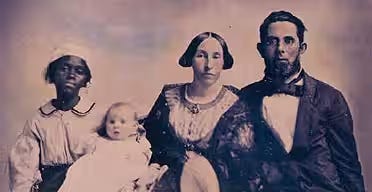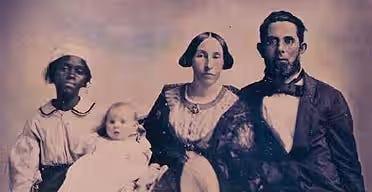I saw a t-shirt today that stopped me in my tracks. It read, “THERES ONLY 2 GENDERS,” and I quietly replied to myself, well that’s sad. Also, it’s there are, not there is.
Of course, it wasn’t just that the t-shirt was grammatically incorrect. It was that its messaging was ideologically violent, erasing entire communities with a lazy sentence in a bold font.
I couldn’t correct the person—it wouldn’t have been appropriate. I was doing work at a high school as a visitor, and it was after our appointment had finished, so it didn’t feel right for me, a woman in her mid-30s, to approach a teenage boy on the basketball court.
It brought me back to my time as a journalist at the newspaper. After I wrote a few articles about the importance of Sexual Orientation and Gender Identity education (also known as SOGI), I was then instructed to cover the anti-SOGI protest, which for me, a SOGI advocate, was hard. SOGI education isn’t about pushing an agenda, but about providing the necessary education to create space where students can safely exist, no matter how they identify. But as a journalist, you must remain objective, and so that is what I did.
I approached the group of protestors who, when they found out I worked for the newspaper, cheered at my arrival. I then did my best to listen to a white mother tell me that her white teenage son felt his gender was threatened due to SOGI education. I asked as many questions as I could—questions about why he, as a white, male teenager, felt threatened—and all I walked away with was more confusion and more questions. Namely: but why? Does his privilege not protect him?
I’ve had several people ask me about gender identity. I’m cis and straight, so I’m no expert. I suppose it’s my background in schooling (I majored in Gender, Race, Sexuality and Social Justice at the University of British Columbia). I’m generally happy to discuss these things as an ally, but I’m careful not to speak on behalf of any marginalized community. I’d rather amplify their voices instead.
Recently, I read The History of Mary Prince, a West Indian Slave (Related by Herself). It’s a brutal and tragic read, and I commended the white authors and their attempts at abolition, working closely with Prince to ensure her story was told accurately in an effort to expose the atrocities of slavery. I later wrote a short assignment about her story and the significance the authors had in validating her story to a white audience. The way I interpreted the editors’ role was similar to someone hiding Jews from the Nazis. The editors of Prince’s work were, after all, abolitionists.
But then I read The Pluralized “I”: White Appropriation of Black Women’s Voices in The History of Mary Prince: A West Indian Slave Narrative by Steven Cason (2002), and I realized I had missed a key element in one of the editor’s notes:
The narrative was taken down from Mary’s own lips by a lady who happened to be at the time residing in my family as a visitor. It was written out fully, with all the narrator’s repetitions and proxlixities, and afterwards pruned into its present shape; retaining, as far as was practicable, Mary’s exact expressions and peculiar phraseology. No fact of importance has been omitted, and not a single cirumstance or sentiment has been added. It is essentially her own, without any material alteration farther than was requisite to exclude redundancies and gross grammatical errors, so as to render it clearly intelligible.
— Thomas Pringle, 1831
How wonderful, I thought! Prince, who was unable to write, was able to share her story with two white editors who published it for her, including her “exact expressions and peculiar phraseology.” But Cason notes a few other key words in Pringle’s explanation: pruned, exclude redundancies, and gross grammatical errors.
Pruned is perhaps the most frightening word here, yet I glossed over it with little further thought. I tend to believe the best in people, and I’m not one to play devil’s advocate; however, abolitionists or not, two white authors edited and published the oral narrative of a Black enslaved woman, pruning it to make it publishable for a white audience. Was Prince able to read the final piece herself? Were the “excluded redundancies” points Prince was really trying to drive home? Who controlled Prince’s voice as a Black woman—Prince, or the two white editors?
Or in Canada (and beyond), where scholarly research is generally regarded with great authority, what happens to the Indigenous stories passed down orally through generations? These narratives, from cultures without a written language, carry their own profound authority, yet they are often dismissed as less valid than written texts.
The most important skill I learned in university was to think critically. It wasn’t something I was taught growing up, especially given my religious background, and a few semesters into university I realized that I often missed the point of the scholarly articles I was reading. I would write a discussion response to them only to find my professor gently prove me wrong. I found this fascinating (and humbling, to say the least)—to realize that I was putting so much work into understanding these articles, and yet there was still so much I was missing.
While education is important (which comes to us in more ways than through Western education), critical thinking skills may be even more crucial. We can all be taught an agenda, but it’s those who are able to ask questions and analyze the agenda who are able to read between the lines, see the flaws, the strengths and the parts that were left out—such as in Prince’s narrative.
Prince’s narrative is just one example. Assumptions that gender only exists as a binary erase the long history of whose truths get told, and whose are silenced or edited out.
And by the way, there have always been more than two genders. The problem is, too often, someone else has held the pen—and too few of us have been taught to question what’s written.





